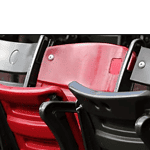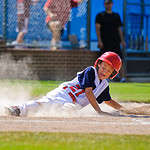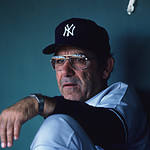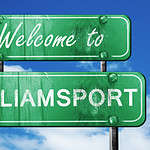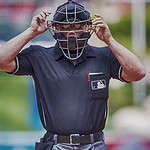MLB stadiums are an integral part of the baseball experience. They offer a unique atmosphere that adds to the excitement of the game. With each new stadium, fans are treated to a fresh perspective on America’s favorite pastime. In this article, we will take a closer look at some of the newest MLB stadiums that have been built in recent years.
One of the newest MLB stadiums is Globe Life Field, home of the Texas Rangers. This state-of-the-art stadium opened in 2020 and features a retractable roof that can be closed in just 12 minutes. With a seating capacity of 40,300, Globe Life Field offers fans an immersive experience that includes a 360-degree video board, a synthetic turf playing surface, and a variety of food and beverage options.
Another new stadium that has captured the attention of baseball fans is SunTrust Park, home of the Atlanta Braves. This stadium opened in 2017 and features a unique design that incorporates elements of the surrounding community. With a seating capacity of 41,000, SunTrust Park offers fans a variety of seating options, including luxury suites and club seats. The stadium also features a variety of food and beverage options, including local craft beer and traditional ballpark fare.
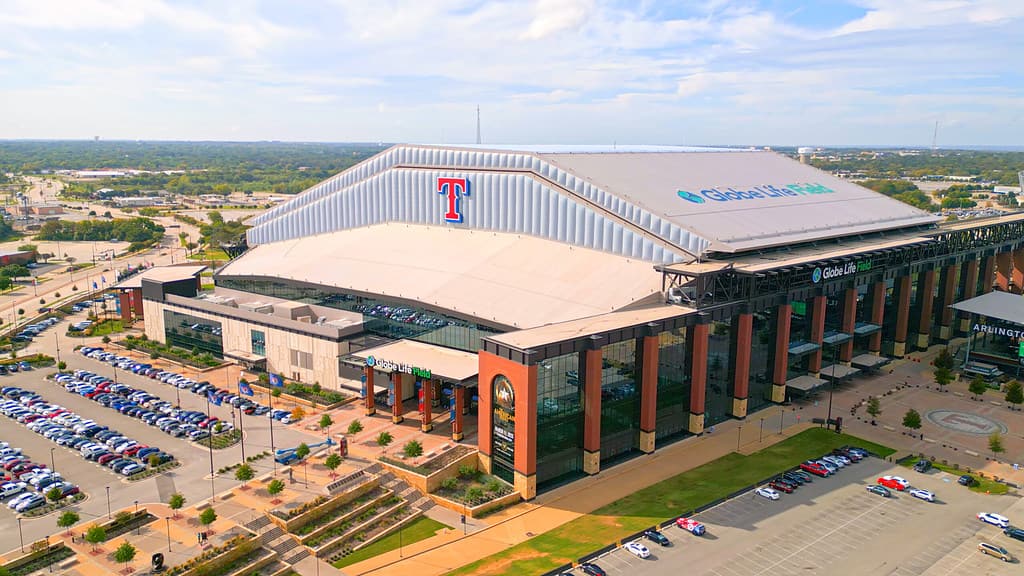
History of MLB Stadiums
Evolution from the Past
The history of MLB stadiums is as old as the game itself. The first baseball stadium was built in Brooklyn, New York, in 1862, and since then, the sport has seen many changes, including the evolution of stadiums. The early stadiums were typically made of wood and had limited seating capacity, but over time, they became more sophisticated and modernized.
In the early 1900s, stadiums began to be built with steel and concrete, which allowed for larger seating capacities and more amenities. One of the most famous stadiums of this era was Yankee Stadium, which opened in 1923 and was the first stadium to be called a “stadium” rather than a “ballpark.” It was also the first stadium to have a triple-decked grandstand.
Tradition vs Modernisation
As the game of baseball evolved, so did the stadiums. Some fans prefer the traditional look and feel of older stadiums, while others prefer the modern amenities of newer stadiums. The debate between tradition and modernization is ongoing, and it is reflected in the design of many newer stadiums.
One example of a modern stadium is Marlins Park in Miami, which opened in 2012. It features a retractable roof and a unique home run sculpture in center field. On the other hand, Fenway Park in Boston, which opened in 1912, is a classic example of a traditional ballpark, with its iconic green monster in left field and manual scoreboard.
In recent years, there has been a trend towards building smaller, more intimate stadiums, such as PNC Park in Pittsburgh, which opened in 2001. These stadiums offer fans a more personal experience and are often designed to fit into their surroundings.
Overall, the history of MLB stadiums is a reflection of the evolution of the game of baseball. From the early days of wooden ballparks to the modern, high-tech stadiums of today, each stadium has its own unique story to tell.
Design and Architecture
Influence on the Game
The design and architecture of a baseball stadium can have a significant impact on the game. The outfield dimensions, roof structure, and playing surface are all critical elements that can affect gameplay. In recent years, many MLB stadiums have been built with smaller outfield dimensions, making it easier for players to hit home runs. The use of artificial turf has also become more prevalent, providing a consistent playing surface and reducing the impact of weather conditions.
Aesthetics
While the functionality of a stadium is essential, its appearance also plays a significant role in creating a memorable experience for fans. Many of the newest MLB stadiums are designed with modern, sleek architecture that incorporates unique features such as retractable roofs and large video screens. Some stadiums also incorporate local themes and artwork to create a sense of place and connection to the surrounding community.
Atmosphere
The design and architecture of a stadium can also contribute to the overall atmosphere of a game. The use of open-air designs and natural grass playing surfaces can create a more authentic baseball experience, while enclosed stadiums with retractable roofs can provide a more controlled environment for fans and players. Additionally, the use of seating arrangements, concessions, and other amenities can contribute to the overall ambiance of a game.
In conclusion, the design and architecture of MLB stadiums play a crucial role in the game of baseball. From influencing gameplay to creating a memorable fan experience, the design elements of a stadium are carefully considered to ensure the best possible outcome. Whether it’s the use of artificial turf or incorporating local artwork, each stadium has its unique features that contribute to the overall atmosphere of the game.
In-Depth Look at the Newest Stadiums
Globe Life Field
Globe Life Field, located in Arlington, Texas, opened its doors in March 2020. The stadium serves as the home of the Texas Rangers and has a seating capacity of 40,300. The stadium features a retractable roof and a climate-controlled environment, making it an ideal venue for games during hot Texas summers.
The stadium also boasts state-of-the-art amenities, including a 100-foot-long video board, a 360-degree concourse, and a variety of food and beverage options. Fans can enjoy a range of seating options, from traditional stadium seats to luxury suites and club seats.
Target Field
Target Field, located in Minneapolis, Minnesota, opened in April 2010 and serves as the home of the Minnesota Twins. The stadium has a seating capacity of 38,544 and features a unique design that incorporates elements of the surrounding city.
The stadium’s amenities include a variety of food and beverage options, including local favorites like Juicy Lucy burgers and craft beer from local breweries. Fans can also enjoy a variety of seating options, from traditional stadium seats to luxury suites and club seats.
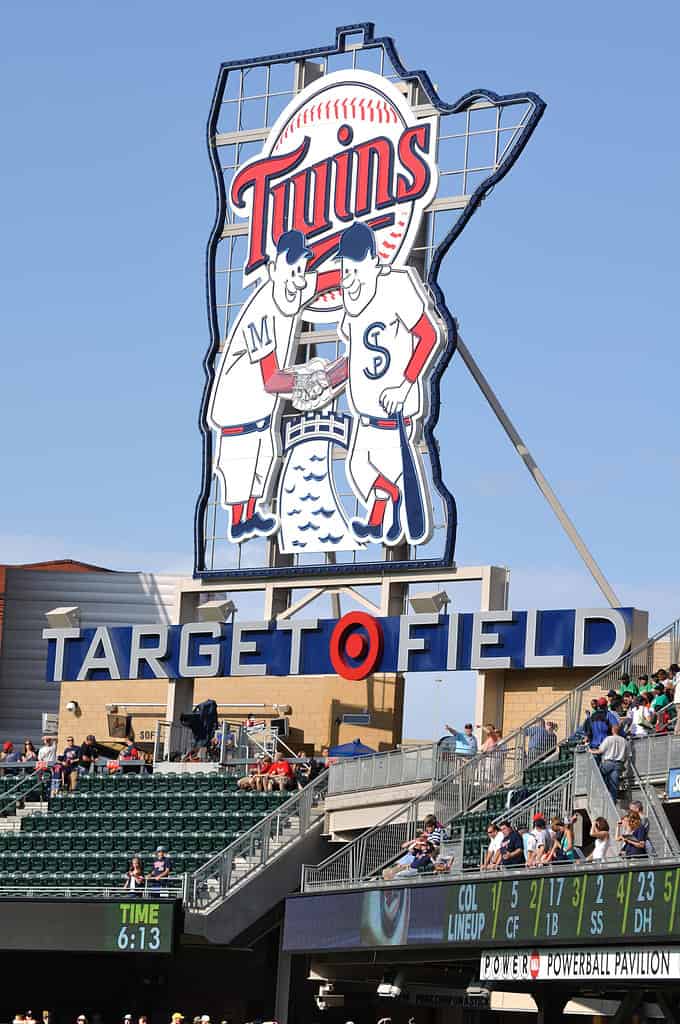
Truist Park
Truist Park, located in Atlanta, Georgia, opened in April 2017 and serves as the home of the Atlanta Braves. The stadium has a seating capacity of 41,084 and features a variety of amenities, including a 90-foot-long video board and a range of food and beverage options.
The stadium also features a unique design that incorporates elements of the surrounding community, including a large plaza that serves as a gathering place for fans before and after games.
LoanDepot Park
LoanDepot Park, located in Miami, Florida, opened in March 2020 and serves as the home of the Miami Marlins. The stadium has a seating capacity of 36,742 and features a retractable roof and a variety of amenities, including a 360-degree concourse and a range of food and beverage options.
The stadium also features a unique design that incorporates elements of the surrounding community, including a vibrant art installation that celebrates the city’s rich cultural heritage.
T-Mobile Park
T-Mobile Park, located in Seattle, Washington, opened in July 1999 and serves as the home of the Seattle Mariners. The stadium has a seating capacity of 47,929 and features a retractable roof and a variety of amenities, including a 56-foot-high video board and a range of food and beverage options.
The stadium also boasts a unique design that incorporates elements of the surrounding community, including a large public square that serves as a gathering place for fans before and after games.
The Role of Renovations
When it comes to modern MLB stadiums, renovations play a crucial role in keeping these iconic venues up-to-date and competitive. In this section, we’ll explore the importance of renovations and how they have impacted some of the league’s most iconic stadiums.
Preserving the Old
One of the key goals of stadium renovations is to preserve the history and character of older ballparks. For example, Yankee Stadium underwent a major renovation in 2009 that modernized the facilities while still paying tribute to the original stadium’s design and history. The renovation included adding new amenities like restaurants and lounges while preserving the iconic facade and other historic elements.
Fenway Park is another example of a stadium that has undergone extensive renovations while still maintaining its classic charm. The park’s latest renovation, completed in 2011, included upgrades to the seating, concourses, and restrooms, while also preserving the iconic Green Monster and other historic features.
Incorporating the New
While preserving history is important, renovations also provide an opportunity to incorporate new technology and amenities that can enhance the fan experience. Wrigley Field underwent a major renovation in 2014 that included adding new video boards and sound systems, as well as new seating and improved player facilities. The renovation also included a new plaza outside the stadium that serves as a gathering place for fans before and after games.
Dodger Stadium is another example of a stadium that has undergone significant renovations in recent years. The stadium’s latest renovation, completed in 2020, included upgrades to the seating, concourses, and restrooms, as well as new food and beverage options and improved Wi-Fi connectivity.
Overall, renovations play a critical role in keeping MLB stadiums competitive and up-to-date, while still preserving their history and character. Whether it’s preserving the old or incorporating the new, stadium renovations are an important part of the league’s ongoing evolution.
Stadium Amenities
Food and Beverage Options
MLB stadiums are known for their diverse food and beverage options, and the newest stadiums are no exception. From classic ballpark food to gourmet options, there is something for everyone.
At the Globe Life Field in Arlington, Texas, fans can enjoy local favorites like Texas brisket and smoked turkey legs. The stadium also offers a variety of craft beers and cocktails.
At the Chase Field in Phoenix, Arizona, fans can indulge in a variety of Mexican-inspired dishes, including carne asada fries and street tacos. The stadium also offers a wide selection of beers, including local craft brews.
Parking and Accessibility
Parking and accessibility are important factors when it comes to enjoying a day at the ballpark. The newest stadiums have made significant improvements in this area.
At the SunTrust Park in Atlanta, Georgia, fans can take advantage of the stadium’s convenient location near major highways and public transportation. The stadium also offers a variety of parking options, including reserved and general parking.
At the Yankee Stadium in New York City, fans can take advantage of the stadium’s close proximity to public transportation. The stadium also offers a variety of parking options, including reserved and general parking.
Technological Advancements
The newest MLB stadiums are equipped with the latest technological advancements to enhance the fan experience.
At the Marlins Park in Miami, Florida, fans can enjoy a state-of-the-art videoboard that is one of the largest in the world. The stadium also offers free Wi-Fi throughout the venue.
At the Miller Park in Milwaukee, Wisconsin, fans can take advantage of the stadium’s advanced mobile app, which allows fans to order food and drinks from their seats. The stadium also offers a variety of charging stations for mobile devices.
Stadiums by Team
National League Stadiums
The National League has some of the most iconic stadiums in baseball. Here are some of the newest and most impressive stadiums in the National League:
Nationals Park
Nationals Park is the home of the Washington Nationals. It has a seating capacity of 41,313 and opened in 2008. The stadium features a unique design with a curved glass and steel exterior. It also has a state-of-the-art scoreboard and sound system.
Busch Stadium
Busch Stadium is the home of the St. Louis Cardinals. It has a seating capacity of 45,529 and opened in 2006. The stadium features a classic design with red brick and green steel. It also has a retractable roof and a large scoreboard.
Petco Park
Petco Park is the home of the San Diego Padres. It has a seating capacity of 40,209 and opened in 2004. The stadium features a unique design with a sandy-colored exterior and a Western Metal Supply Co. building in left field. It also has a large scoreboard and a grassy seating area in center field.
Citizens Bank Park
Citizens Bank Park is the home of the Philadelphia Phillies. It has a seating capacity of 42,792 and opened in 2004. The stadium features a classic design with red brick and green steel. It also has a large scoreboard and a unique Liberty Bell-shaped home run structure.
Citi Field
Citi Field is the home of the New York Mets. It has a seating capacity of 41,922 and opened in 2009. The stadium features a unique design with a brick exterior and a large rotunda entrance. It also has a large scoreboard and a grassy seating area in center field.
American League Stadiums
The American League has some of the most modern and high-tech stadiums in baseball. Here are some of the newest and most impressive stadiums in the American League:
Kauffman Stadium
Kauffman Stadium is the home of the Kansas City Royals. It has a seating capacity of 37,903 and opened in 1973. The stadium underwent a major renovation in 2009, which included new seating, a new scoreboard, and a new Hall of Fame.
Chase Field
Chase Field is the home of the Arizona Diamondbacks. It has a seating capacity of 48,686 and opened in 1998. The stadium features a retractable roof and a swimming pool in right-center field. It also has a large scoreboard and a unique design with a sand-colored exterior.
Oriole Park at Camden Yards
Oriole Park at Camden Yards is the home of the Baltimore Orioles. It has a seating capacity of 45,971 and opened in 1992. The stadium is known for its classic design with red brick and green steel. It also has a large scoreboard and a unique design with a warehouse in right field.
Rogers Centre
Rogers Centre is the home of the Toronto Blue Jays. It has a seating capacity of 49,282 and opened in 1989. The stadium features a retractable roof and a large scoreboard. It also has a unique design with a hotel attached to the stadium.
Miller Park
Miller Park is the home of the Milwaukee Brewers. It has a seating capacity of 41,900 and opened in 2001. The stadium features a retractable roof and a large scoreboard. It also has a unique design with a fan-shaped retractable roof.
Great American Ball Park
Great American Ball Park is the home of the Cincinnati Reds. It has a seating capacity of 42,319 and opened in 2003. The stadium features a unique design with a red brick and limestone exterior. It also has a large scoreboard and a unique design with a smokestack in center field.
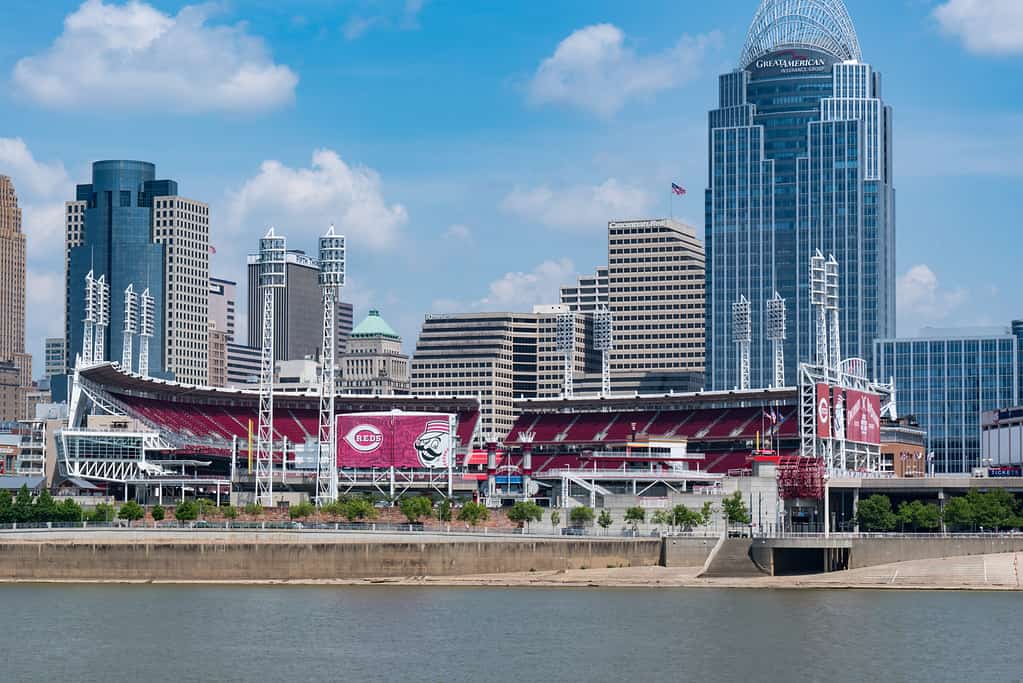
Angel Stadium
Angel Stadium is the home of the Los Angeles Angels. It has a seating capacity of 45,517 and opened in 1966. The stadium underwent a major renovation in 1998, which included new seating and a new scoreboard. It also has a unique design with a rock formation in center field.
PNC Park
PNC Park is the home of the Pittsburgh Pirates. It has a seating capacity of 38,362 and opened in 2001. The stadium features a unique design with a green steel exterior and a view of the Pittsburgh skyline. It also has a large scoreboard and a unique design with a riverwalk in right field.
Tropicana Field
Tropicana Field is the home of the Tampa Bay Rays. It has a seating capacity of 25,000 and opened in 1990. The stadium features a unique design with a dome roof and a large scoreboard. It also has a unique design with a ray tank in center field.
Minute Maid Park
Minute Maid Park is the home of the Houston Astros.
Fan Experience
Atmosphere and Character
The newest MLB stadiums offer an exciting and immersive atmosphere that can make any baseball fan feel at home. From the moment you step into the stadium, you are greeted with a sense of excitement and anticipation that is hard to match. The design and layout of the stadium are carefully planned to create a unique experience that is both comfortable and engaging.
One of the standout features of the newest MLB stadiums is the attention to detail when it comes to character and atmosphere. Each stadium has its own unique personality and style, which is reflected in everything from the architecture to the food and drink options. Whether you are a die-hard fan or just a casual observer, you can’t help but be impressed by the level of thought and care that goes into creating these amazing spaces.
Fan Engagement
Another key aspect of the fan experience at the newest MLB stadiums is the level of fan engagement. From interactive displays and games to meet-and-greets with players and coaches, there is always something to keep fans engaged and entertained. The newest stadiums are designed with the fan in mind, and it shows in the wide range of activities and experiences that are available.
On opening day, the atmosphere is electric as fans come together to celebrate the start of a new season. The excitement is palpable, and the sense of community and camaraderie is hard to match. Whether you are a lifelong fan or just discovering the joys of baseball, the newest MLB stadiums offer an unforgettable fan experience that is sure to leave you wanting more.
Location and Impact
Urban vs Suburban Stadiums
When it comes to the location of a stadium, there are generally two types: urban and suburban. Urban stadiums are located in or near the downtown area of a city, while suburban stadiums are located outside of the city center in more suburban or rural areas.
Urban stadiums often have the advantage of being located near public transportation and other amenities, making them more accessible to fans. However, they can also be more expensive to build and maintain due to the high cost of land and construction in urban areas.
Suburban stadiums, on the other hand, often have more space for parking and tailgating, as well as lower construction costs. However, they can be less accessible to fans who live in the city center and rely on public transportation.
Economic and Social Impact
The impact of a new stadium on a city’s economy and social fabric can be significant. A new stadium can generate jobs and revenue for the local economy, as well as increase tourism and attract new businesses to the area.
However, there are also potential downsides to building a new stadium. Some critics argue that stadiums often receive public funding that could be better spent on other public services, such as education and healthcare. Additionally, the construction of new stadiums can sometimes displace local residents and businesses.
Overall, the location of a stadium and its impact on the local community should be carefully considered before any new construction takes place. While a new stadium can bring economic and social benefits, it is important to weigh these benefits against the potential costs and drawbacks.
| Location | Stadium Rankings |
|---|---|
| Urban | Yankee Stadium, Citi Field, Fenway Park |
| Suburban | Dodger Stadium, AT&T Park, Coors Field |
Frequently Asked Questions
What are the newest stadiums in MLB?
The newest stadiums in MLB are Globe Life Field, which opened in 2020, and Truist Park, which opened in 2017.
Where is the newest MLB stadium?
Globe Life Field, the newest MLB stadium, is located in Arlington, Texas.
What is the most modern MLB stadium?
The most modern MLB stadium is Globe Life Field, which features a retractable roof and advanced technology for fan experience.
What is the youngest MLB stadium?
Globe Life Field, which opened in 2020, is the youngest MLB stadium.
How many MLB stadiums are there?
There are currently 30 MLB stadiums in use, with Globe Life Field being the newest addition.
Which MLB stadium has the highest capacity?
Dodger Stadium, located in Los Angeles, California, has the highest capacity of any MLB stadium, with a seating capacity of 56,000.
- UCLA Softball: Let’s Go Bruins! - February 12, 2024
- Youth Softball Helmet Buying Guide: Keep ‘Em Safe - February 12, 2024
- Youth Softball Pants: Our Top Picks for Your Top Player - February 12, 2024


